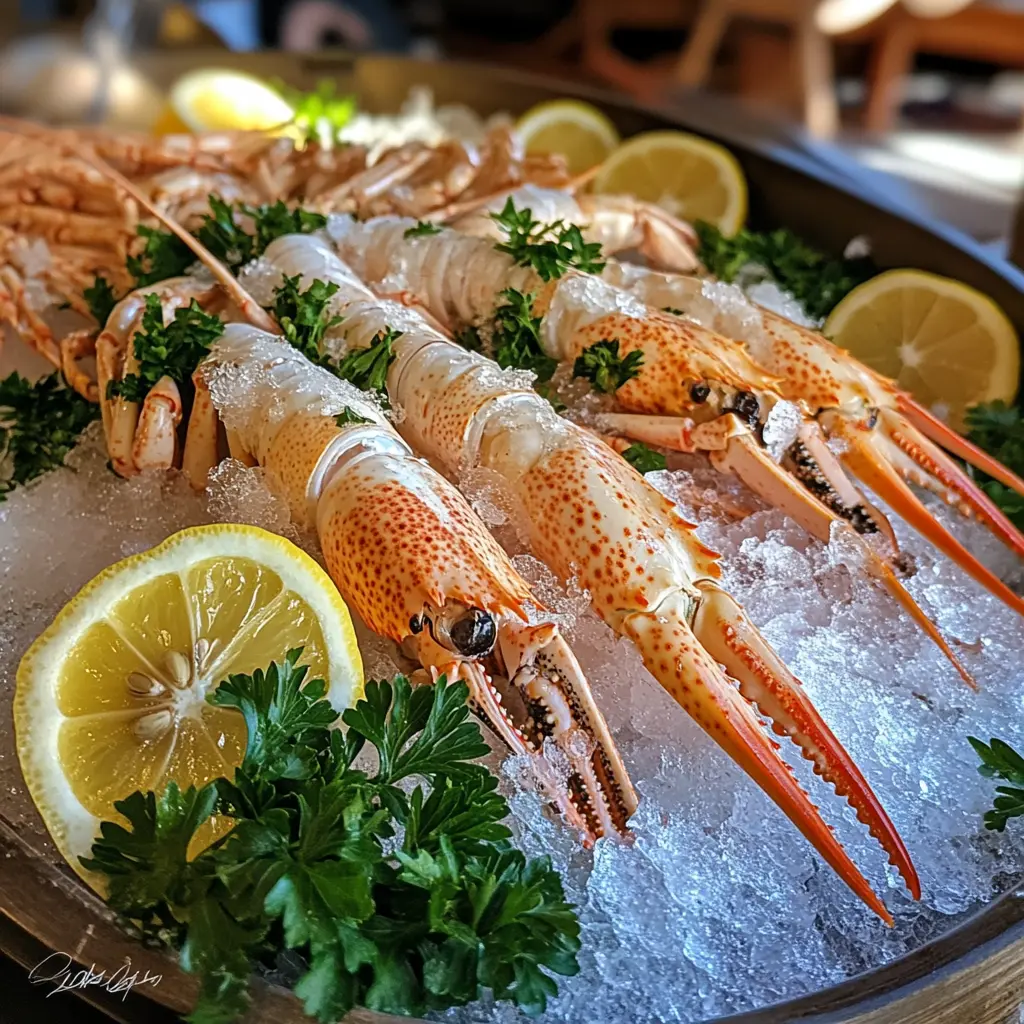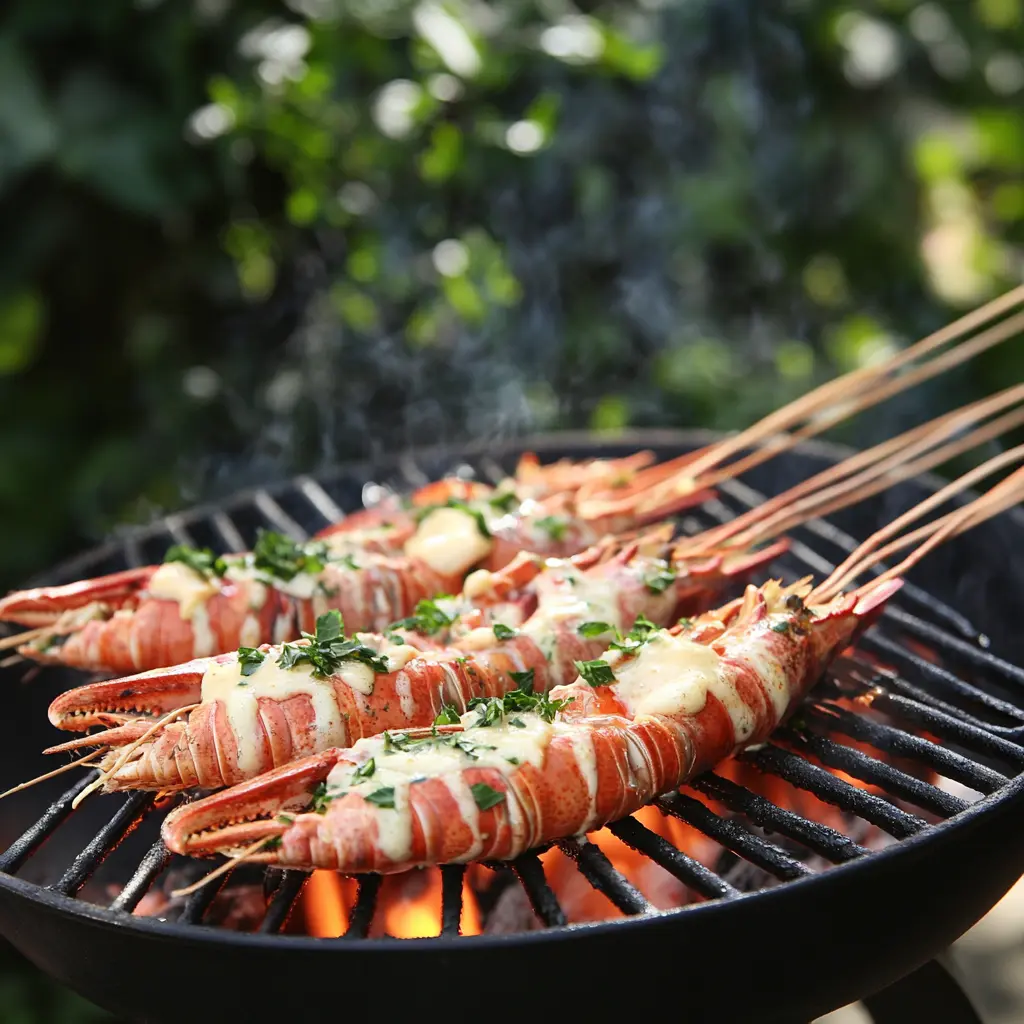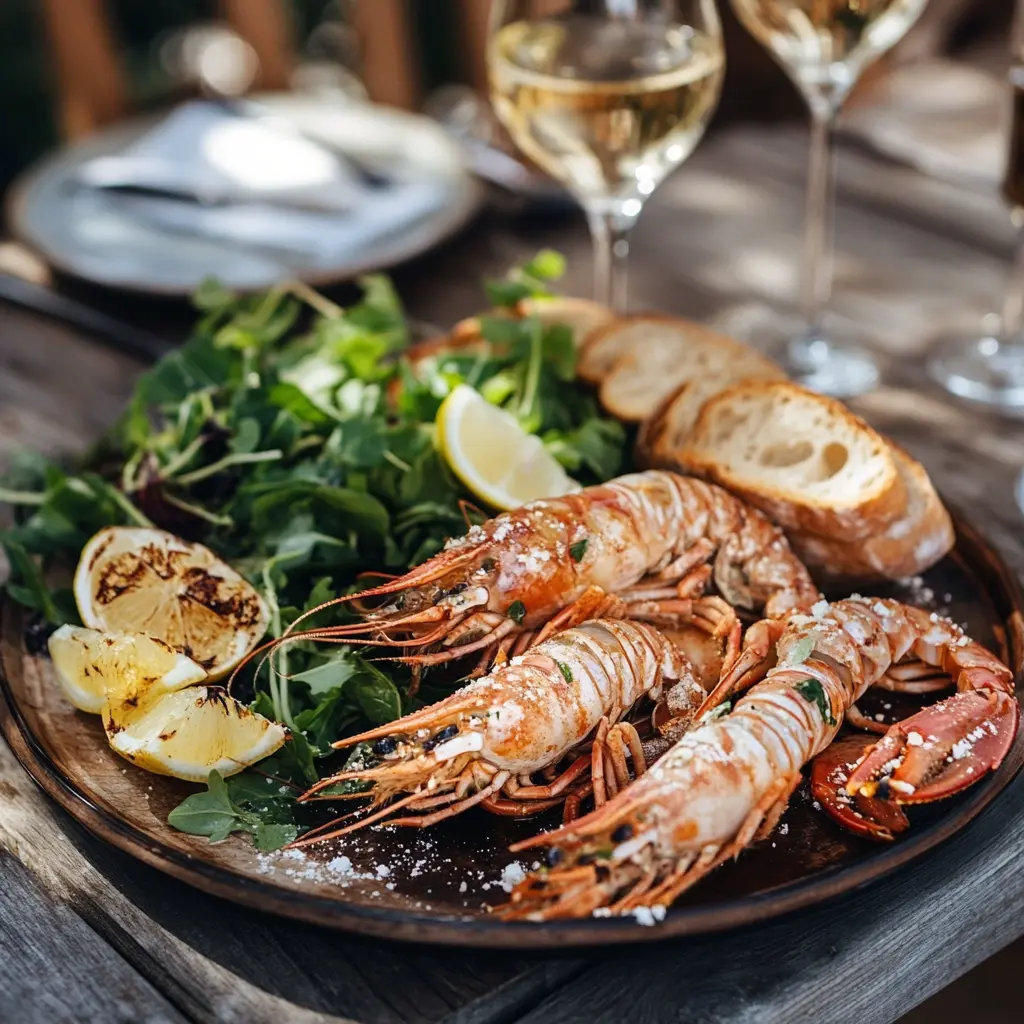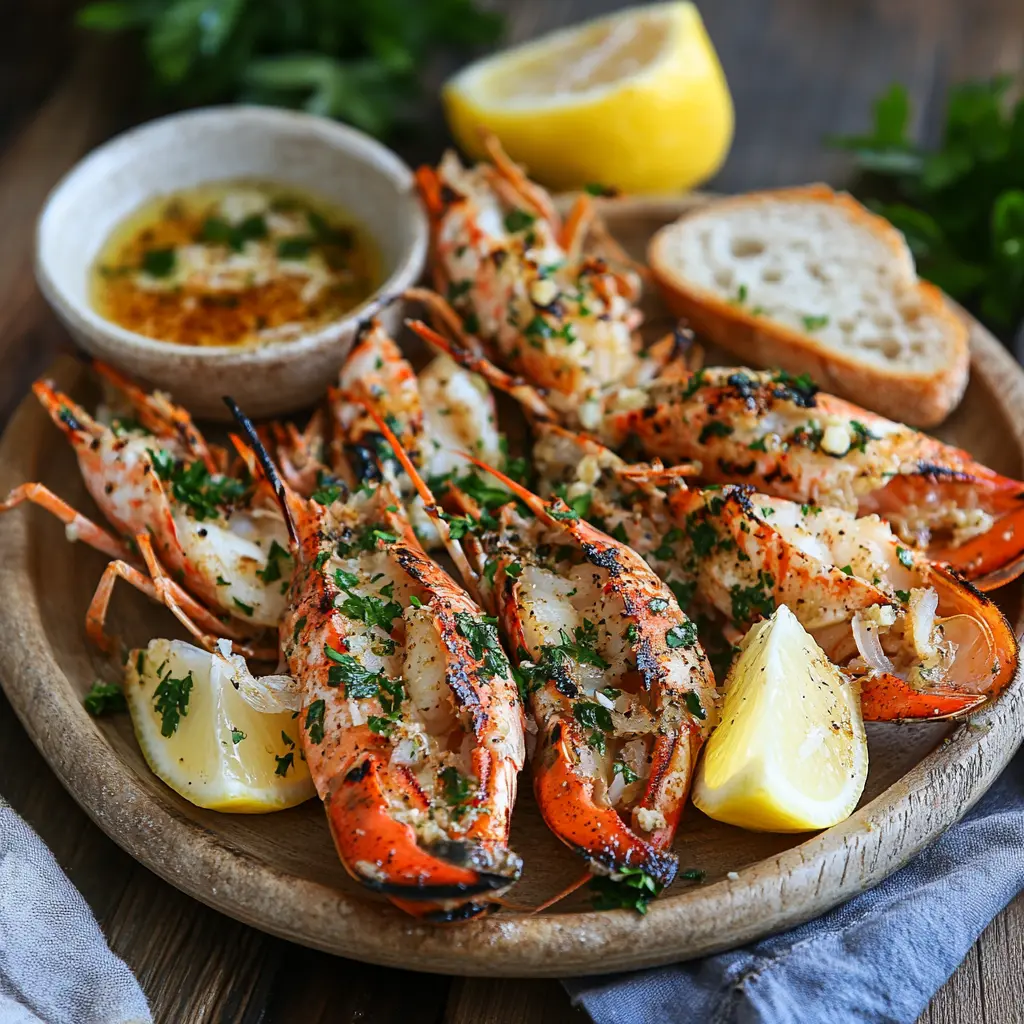Langoustine Recipe, also known as Norway lobsters, are a true gem of the seafood world. Revered for their sweet, delicate flavor and tender, succulent meat, they are a favorite among chefs and seafood enthusiasts alike. Found primarily in the cold waters of the North Atlantic and the Mediterranean, these crustaceans are often compared to lobsters for their taste and appearance, though they are smaller and even more refined in flavor.
Langoustines are versatile and can be prepared using a variety of methods, from simple grilling to elaborate recipes like risottos, pastas, and bisques. Their natural sweetness and luxurious texture make them the perfect centerpiece for both casual dinners and elegant occasions. Whether you’re cooking them whole, serving the tails, or using their flavorful shells to create a rich stock, langoustines always add a touch of sophistication to any dish.
In this guide, we’ll explore everything you need to know about langoustines: how to choose them, prepare them, and cook them to perfection. We’ll also provide a step-by-step recipe for Garlic Butter Grilled Langoustines, a simple yet indulgent dish that highlights their exquisite flavor. If you’re ready to elevate your seafood game, let’s dive into the world of langoustines!
In This Recipe
Why Langoustines Are Special ”Langoustine Recipe”
Langoustines are often referred to as the “jewels of the sea” due to their exquisite taste, delicate texture, and culinary versatility. These crustaceans are more than just a smaller cousin of the lobster—they bring a unique charm to the table that has earned them a place in the world’s finest cuisines. Here’s what makes langoustines truly special:
1. Unique Flavor Profile
- Sweet and Delicate: Langoustines are renowned for their naturally sweet, mild flavor that’s less briny than shrimp and more refined than lobster. This subtle taste makes them a versatile ingredient, able to pair beautifully with both simple seasonings and complex sauces.
- Savory Complexity: When cooked, langoustines develop a savory richness that enhances their appeal, creating a balance of sweetness and umami in every bite.
2. Tender, Succulent Texture
- Melt-in-Your-Mouth Consistency: The meat of langoustines is incredibly tender, almost melting in the mouth when properly cooked. Unlike some seafood that can turn rubbery if overcooked, langoustines maintain their delicate texture with quick cooking methods like grilling or boiling.
- Versatile Cooking Options: Whether grilled, poached, or sautéed, langoustines deliver a luxurious eating experience that’s both light and satisfying.
3. Culinary Versatility
- A Star Ingredient: Langoustines can be the centerpiece of various dishes, from elegant appetizers like grilled langoustines with garlic butter to hearty mains such as langoustine risotto or pasta dishes.
- Enhancer of Flavors: Even the shells are a treasure trove of flavor, often used to create rich stocks and bisques that elevate soups and sauces.
- International Appeal: Langoustines feature prominently in global cuisines, from the French bouillabaisse to the Italian scampi alla griglia, showcasing their universal appeal.
4. A Luxurious Delicacy
- Gourmet Status: Langoustines are considered a luxury item in the culinary world, often featured on the menus of high-end restaurants. Their delicate nature and relatively small size make them a prized delicacy that chefs love to work with.
- Impressively Elegant: Serving langoustines at a dinner party or special occasion instantly elevates the meal, offering a touch of sophistication that few other ingredients can match.
5. Nutritional Benefits
- High in Protein: Langoustines are an excellent source of lean protein, making them a healthy choice for seafood lovers.
- Rich in Omega-3 Fatty Acids: These essential fats contribute to heart health and overall well-being, adding to the nutritional appeal of langoustines.
- Low in Calories: With their low calorie count, langoustines are ideal for indulgent meals that don’t compromise a balanced diet.
6. A Sustainable Choice
- Selective Fishing: Many langoustine fisheries practice sustainable fishing methods, ensuring that these crustaceans remain available for generations to come.
- Environmentally Friendly: Compared to larger crustaceans like lobsters, langoustines have a smaller environmental footprint, making them an eco-conscious choice for seafood enthusiasts.
Langoustines combination of unique flavor, tender texture, and culinary versatility truly sets them apart from other seafood options. Whether you’re savoring them in a simple preparation or incorporating them into a more elaborate dish, langoustines never fail to impress with their luxurious taste and elegant appeal.
How to Choose and Prepare Langoustines ”Langoustine Recipe”
Choosing Fresh Langoustines

- Look for langoustines with shiny shells and a mild sea-like aroma.
- Ensure the eyes are clear, not cloudy, as this indicates freshness.
Cleaning Langoustines ”Langoustine Recipe”
- Rinse under cold water to remove any sand or debris.
- For whole langoustines, you can cook them as-is or remove the head and shell for a cleaner presentation.
- If peeling, gently twist off the head, crack the shell with your fingers or a seafood tool, and extract the tail meat.
Langoustine Recipe: Garlic Butter Grilled Langoustines ”Langoustine Recipe”
Ingredients:https://www.greatbritishchefs.com/collections/langoustine-recipes
- 8 fresh langoustines (whole or tails)
- 3 tablespoons unsalted butter, melted
- 3 cloves garlic, minced
- 1 tablespoon olive oil
- 1 tablespoon fresh parsley, chopped
- 1 lemon (halved)
- Salt and black pepper to taste
Instructions:

- Prepare the Langoustines:
- If using whole langoustines, split them in half lengthwise with a sharp knife. If using tails, leave them whole.
- Make the Garlic Butter:
- In a small bowl, mix melted butter, olive oil, minced garlic, and a pinch of salt and pepper.
- Preheat the Grill:
- Set your grill or grill pan to medium-high heat. Lightly oil the grates to prevent sticking.
- Grill the Langoustines:
- Brush the langoustines generously with the garlic butter mixture. Place them flesh-side down on the grill and cook for 2–3 minutes until lightly charred. Flip and cook for an additional 2–3 minutes until the shells turn bright orange and the meat is opaque.
- Add Finishing Touches:
- Squeeze fresh lemon juice over the grilled langoustines and sprinkle with chopped parsley.
- Serve and Enjoy:
- Arrange the langoustines on a platter, garnish with lemon wedges, and serve immediately with crusty bread or a side salad.
Tips for Cooking Langoustines ” Langoustine Recipe ”
Cooking langoustines can be an exciting and rewarding culinary experience. Their delicate flavor and tender texture require careful attention to ensure they’re cooked to perfection. Whether you’re preparing them for a simple dish or a more elaborate recipe, these tips will help you bring out the best in this prized seafood delicacy.
1. Keep It Simple to Highlight Their Natural Flavor ” Langoustine Recipe ”
- Why: Langoustines have a naturally sweet and delicate flavor that doesn’t need heavy seasoning or complicated preparations. Simple ingredients like olive oil, garlic, butter, and lemon are enough to enhance their taste.
- How: Use minimal ingredients to avoid overpowering their natural flavor. A light drizzle of olive oil or a brush of garlic butter is often all they need.
2. Avoid Overcooking ” Langoustine Recipe ”
- Why: Langoustine meat is tender and cooks very quickly. Overcooking can make the texture rubbery and dry, diminishing their luxurious appeal.
- How: Stick to short cooking times:
- Grilling: 2–3 minutes per side.
- Boiling: 2–3 minutes in salted water.
- Sautéing: 3–4 minutes over medium-high heat.
- Baking: 5–8 minutes at 400°F (200°C), depending on their size.
- Keep a close eye on the color of the shells, which turn bright orange when they’re cooked.
3. Use High Heat for Quick Cooking ” Langoustine Recipe ”
- Why: High heat methods like grilling or sautéing seal in the juices, creating a caramelized exterior while keeping the meat tender and succulent.
- How: Preheat your grill, pan, or oven to ensure the langoustines cook quickly and evenly. A lightly oiled grill or skillet prevents sticking and enhances the natural flavor.
4. Season Before and After Cooking ” Langoustine Recipe ”
- Why: Seasoning both before and after cooking ensures the flavor penetrates the meat and creates a well-rounded taste.
- How: Sprinkle salt, pepper, and any desired spices (like red pepper flakes or paprika) before cooking. After cooking, finish with a squeeze of lemon juice, a sprinkle of parsley, or a drizzle of melted butter for extra flavor.
5. Use the Shells for Extra Flavor ” Langoustine Recipe ”
- Why: Langoustine shells are packed with flavor and can be used to create rich stocks, soups, or sauces.
- How: Save the shells after peeling. Simmer them with aromatics like onions, celery, and garlic to make a flavorful base for bisques, risottos, or seafood pastas.
6. Choose the Right Cooking Method for the Occasion ” Langoustine Recipe ”
- Why: Different cooking methods suit different dishes and dining experiences.
- How:
- Grilling: Perfect for casual meals or entertaining, offering a smoky flavor.
- Boiling: Ideal for peeling and using the meat in salads, pastas, or risottos.
- Sautéing: Great for creating quick, flavorful dishes like langoustines in garlic butter.
- Baking: Best for dishes where the langoustines are cooked with other ingredients, like gratins or casseroles.
7. Handle with Care ” Langoustine Recipe ”
- Why: Langoustines are delicate, and rough handling can damage their shells or tear the meat.
- How: Use sharp kitchen shears to cut the shells cleanly, and handle the meat gently when removing it. If splitting langoustines lengthwise, use a sharp knife to make precise cuts.
8. Pair Them with Complementary Flavors ” Langoustine Recipe ”
- Why: Langoustines pair beautifully with light, fresh flavors that enhance their sweetness without overpowering them.
- How:
- Herbs: Parsley, dill, chives, or thyme.
- Citrus: Lemon or lime juice for brightness.
- Garlic and Butter: A classic combination that enhances their natural richness.
- Spices: Red pepper flakes or a touch of smoked paprika for a subtle kick.
9. Defrost Frozen Langoustines Properly ” Langoustine Recipe ”
- Why: Frozen langoustines are a great alternative to fresh, but improper defrosting can affect their texture.
- How: Thaw frozen langoustines in the refrigerator overnight or under cold running water for a faster option. Avoid using warm water, as it can cause uneven defrosting.
10. Plate Elegantly ” Langoustine Recipe ”
- Why: Langoustines are visually stunning and can make any dish look elegant and gourmet.
- How: Arrange them neatly on a platter or plate, garnished with fresh herbs, lemon wedges, or a drizzle of olive oil. Their bright orange shells add a dramatic flair to any presentation.
11. Experiment with Regional Recipes ” Langoustine Recipe ”
- Why: Langoustines are celebrated in many cuisines, each offering unique ways to highlight their flavor.
- How: Try dishes like:
- Scampi alla Griglia: Italian-style grilled langoustines with olive oil and herbs.
- Bouillabaisse: A French seafood stew where langoustines add depth and richness.
- Langoustine Tempura: A Japanese-inspired twist with a crispy batter.
Mastering these tips ensures that your langoustines are always cooked to perfection, delivering an unforgettable dining experience. Their delicate flavor and versatility make them an excellent choice for any occasion, whether it’s a casual family dinner or a sophisticated celebration.
Other Delicious Langoustine Recipes

1. Langoustine Bisque
- A creamy soup made by simmering langoustine shells with aromatics, cream, and white wine, creating a luxurious starter.
2. Langoustine Pasta
- Toss langoustine tails with spaghetti, olive oil, garlic, cherry tomatoes, and fresh basil for an Italian-inspired dish.
3. Langoustine Risotto
- Add langoustines to a creamy risotto with saffron or Parmesan for a decadent seafood entrée.
4. Langoustine Tempura
- Coat langoustine tails in a light tempura batter and fry until crispy for a delightful appetizer.
FAQs About Langoustines ” Langoustine Recipe ”
1. What’s the best way to cook langoustines?
Grilling, boiling, or pan-searing are excellent methods that preserve their delicate flavor and texture.
2. Can I use frozen langoustines?
Yes, frozen langoustines work well if fresh ones aren’t available. Thaw them completely before cooking.
3. How long can I store fresh langoustines?
Fresh langoustines should be cooked within 1–2 days of purchase. Keep them refrigerated and covered with a damp cloth.
4. What’s the difference between langoustines and prawns?
Langoustines have a sweeter, more delicate flavor than prawns and are closer in taste to lobster.
5. Can I eat the whole langoustine?
While the tail meat is the main edible part, the claws contain flavorful meat, and the heads are often used to make stock or bisque.
Conclusion
Langoustines are a true treasure of the sea, prized for their sweet, delicate flavor and tender texture. Whether you’re grilling them with garlic butter, incorporating them into a creamy risotto, or using their shells to craft a rich stock, these versatile crustaceans bring a touch of elegance to any meal. With their unique flavor profile and nutritional benefits, langoustines are a perfect choice for seafood lovers who want to create memorable dishes.https://royalesrecipes.com/what-is-langoustine-a-guide-to-the-seafood-delicacy/
By following the tips and techniques outlined in this guide, you can confidently prepare langoustines to highlight their natural beauty and taste. From choosing the freshest langoustines to mastering quick cooking methods like grilling or sautéing, the possibilities are endless. With just a few simple ingredients—like olive oil, lemon, garlic, and herbs—you can elevate langoustines into a gourmet experience.
Whether you’re planning a casual dinner at home or an extravagant seafood feast, langoustines are guaranteed to impress. Now it’s time to step into the kitchen, embrace this culinary delight, and create a dish that’s as luxurious as it is delicious. Bon appétit!

